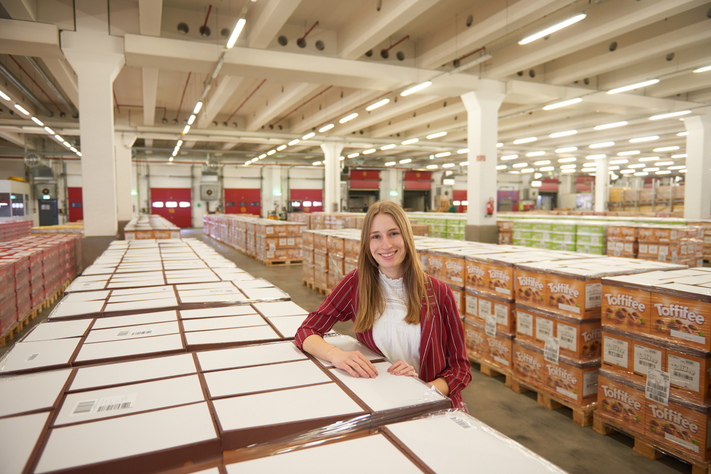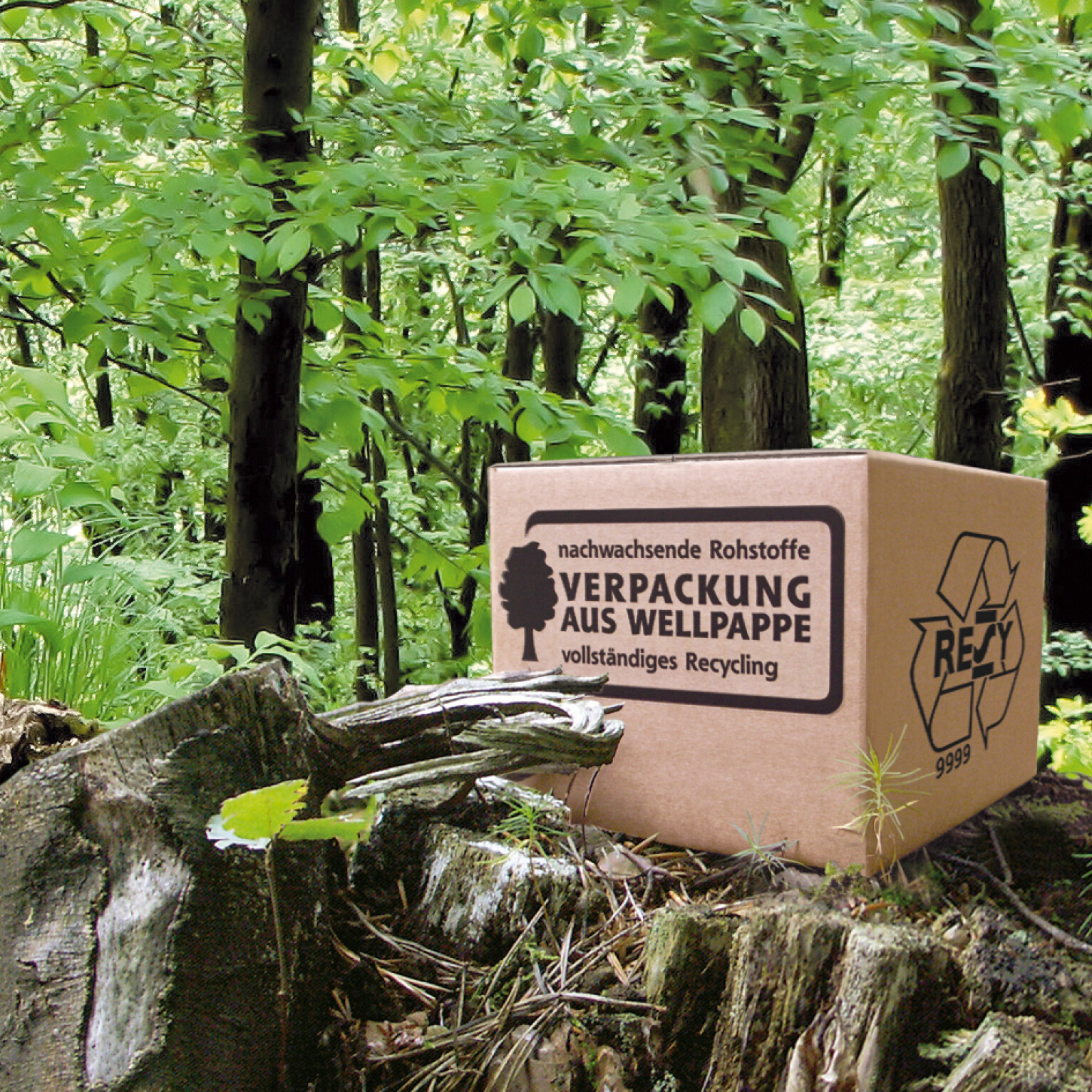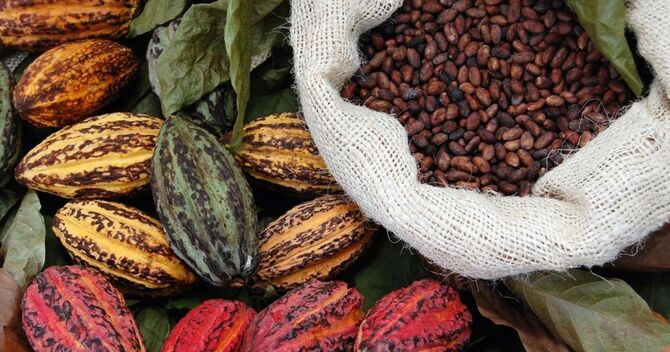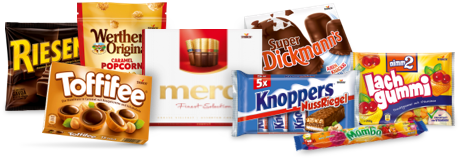Optimising packaging

Taking on challenges
The right packaging ensures that our confectionery reaches consumers safely, has the longest possible shelf life and that fruit gums or chocolate fillings, for example, do not dry out. A specialised department works continuously to optimise the packaging that is so important for our confectionery. In addition to product quality and safety, our packaging experts also focus on sustainability and strive to use materials and energy responsibly. At the same time, we are aware that packaging accounts for only about 3% of a product's carbon footprint. This 3% protects the product, which accounts for 97% of the total footprint. For us, acting sustainably therefore means above all protecting our fresh confectionery in the best possible way.
Choosing the right packaging material
The choice of packaging material depends not only on quality protection and sustainability aspects, but also on numerous other factors: we have to take into account the processability on our packaging machines, the wide variety of logistics requirements and also the information needs of consumers. Packaging development is correspondingly complex. It involves weighing up various advantages and disadvantages, testing possible alternatives in practice and evaluating innovative materials.
We primarily use cardboard, corrugated cardboard, plastics, paper and aluminium for our packaging. Almost 80% of our packaging material is wood-based and therefore obtained from a renewable raw material. This applies to all transport packaging, for example, which is mostly made of corrugated cardboard. The cardboard boxes for chocolate products and special wrapping paper are also wood-based. Most of our wood-based packaging materials are certified according to FSC or PEFC sustainability standards. These certifications guarantee that only wood from sustainable forestry is used.

When used as primary packaging – in direct contact with our confectionery – wood-based materials have functional limitations in terms of product protection. They are permeable to air, light and moisture and do not fulfil the required protective function. We therefore also use plastics and aluminium wrappings. They provide a reliable barrier that protects our confectionery and its taste by preventing oxygen or UV light from negatively affecting product quality. Plastics and aluminium are also easily recyclable, lightweight and flexible, making them versatile in their application.
Reducing packaging waste
When developing and using product packaging, we follow the three-pronged approach of ‘Reduce, Recycle, Reuse’ in line with legislative targets. With the European Packaging and Packaging Waste Regulation (PPWR) coming into force, all packaging materials used in the EU must be 100% recyclable by 2030. Accordingly, our goal is to make the proportion of our packaging that is not yet recyclable (10%) recyclable by 2030. In addition, there are further approaches to reducing packaging waste with Extended Producer Responsibility (EPR), the EU Single-Use Plastics Directive (SUPD) and levies on single-use plastic packaging.
Reduce
We use high-quality materials that are as thin and lightweight as possible wherever functionality allows. We are intensively searching for ways to further reduce the amount of packaging we use. This is a particular challenge because the protective function of the packaging must be maintained and product safety must not be compromised. We regularly review the development of new materials with a view to their possible use for our purposes and are actively working on alternatives in our search for even better packaging for our products.
Recycle
Cardboard, corrugated cardboard, paper and aluminium are packaging materials with very good recyclability. At Storck, they account for around 80% of the packaging materials we use. We also attach great importance to high recyclability in the plastic packaging we use. Over 90% of the packaging we use is recyclable.
A basic prerequisite for recycling to work in practice is a well-functioning collection, sorting and recycling infrastructure where packaging waste is generated. In Germany, there is a nationwide collection system financed by levies on companies that put packaging into circulation. All packaging materials that come into direct contact with food are therefore licensed through a dual system for household disposal. They can be recycled via the collection system.
Reuse
Recycled plastic and paper materials cannot be used for confectionery packaging that comes into direct contact with food for reasons of hygiene, sensory properties and product safety. Undesirable or even harmful substances could be transferred from these recycled materials to the food. Product safety and quality assurance currently require that only primary materials be used for the immediate packaging of our confectionery products. In the future, chemical recycling, which is currently being researched and whose development we are closely monitoring, could open up new opportunities for recycled materials.
Recycled materials are well suited for transport packaging as they do not come into direct contact with the product. We therefore use corrugated cardboard for transport packaging – an ideal transport material that is easy to recycle. Around 70% of corrugated cardboard consists of reused secondary fibres. This proportion of recycled fibres cannot be increased indefinitely because as the proportion increases, the stability of the cardboard decreases and the technical parameters required to fulfil its protective function can no longer be achieved.


